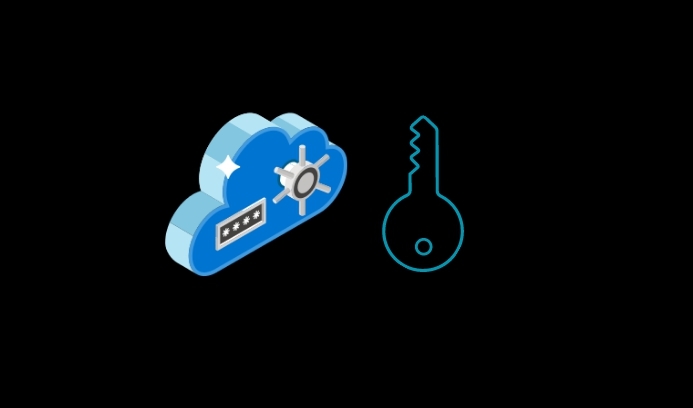In this article, we will know how to encrypt files in the cloud. After the world stepped into the digital era, most of the information in almost all domains turned digital. With cloud technology, businesses have become so easy to operate. At the same time, there has been a rampant rise in cybercrime regarding digital assets and information present over the web or on the cloud.
This is where the concept of encrypting the files in the cloud comes into the forefront. Although we cannot deem cloud storage protection fool-proof in all aspects, it still offers a great deal of protection from potential cybercrimes such as data hacking, phishing, and breaches.
Understanding Cloud Encryption
Before a chunk of data makes its way into the cloud storage, it gets encrypted. This is the crux of cloud encryption. Data privacy and security are the major reasons why cloud encryption is implemented.
Encrypting the data in the cloud will ensure that no unauthorized access gets to know the data, breach it or tamper with it by any means. Encryption will enable only the users concerned with the data on the cloud to access it or modify it as per their needs. They are usually provided with an encryption key.
The data, when converted into encryption turns into a form that cannot be deciphered by humans unless they have the right tools to decrypt it. For that, the encryption key is the right tool, and it is only available to the rightful owners or users of the data stored in the cloud.
Advantages of Encrypting the Files in the Cloud
Let us understand the benefits that encrypting files in the cloud offers.
Enhanced security
Encryption of cloud data at all levels ensures total security from any sort of cyber attack. Also, frequent monitoring of the process even fortifies the data.
Complying with the Law
When you deal with your customers, it is the right of customers to have their sensitive data kept securely. A data breach has often been a menace for major tech and finance companies in the past, leading to lawsuits.
All around the world, there are many laws for the protection of customers’ data. All businesses dealing with customers from any region must comply with the law of the land to maintain the privacy and security of their customer’s data.

Better Data Integrity
With time as a CSP evolves with its functionality, it offers better data integrity. The data remains secure with better management and implementation of cloud data encryption. Also, all use and transfer of the data is efficiently and securely carried out. All of this promotes better data integrity for the clients of the CSPs.
Lesser Risks
With information encrypted safely, businesses avert data breaches, hackings, and data leaks. Any of these events can cause massive lawsuits against the firms and further complicate the problem. It is wise to encrypt the data and provide access only to the rightful users or owners.
Types of Data that go Through Encryption
Mainly two types of cloud data can be encrypted. One of them is Data in Transit. This means a piece of data that is moving from one point to another. When data is in transit or motion, there is a high probability of it being breached by unauthorized parties. So, this data, while it is being transferred, must be encrypted.

Secondly, there comes Data at Rest. This means the data in the cloud is not being used. It is also not being transferred. There is also a higher chance of this type of data getting hacked by cybercriminals. Knowing the type of data in the cloud allows enterprises and businesses to enforce proper encryption mechanism and manage it efficiently.
How to Encrypt the Files in the Cloud?
Cloud Encryption primarily uses the encryption key, which is based on certain algorithms. The encryption key has to be generated by an encryption provider. This key is usually generated uniquely every time a rightful owner or user of the cloud data wants to access it.
Even if cybercriminals get access to the cloud data, without a proper encryption tool, they cannot crack the encrypted data. Encrypted data uses a security sockets layer (SSL). It can be accessed only by the rightful owner or user of the data. The SSL encrypts each session of use. This means each time a user wants to access the data, they would require to use a unique encryption key. This adds even more security to the data and the session.
Two encryption algorithms are used for cloud data. It could be the data that is stored or being used. In Symmetric encryption, the encryption and decryption are the same. It is often considered less secure. This method is used to secure a huge chunk of data.
Secondly, there comes asymmetric encryption. Contrary to symmetric encryption, this one implements two separate keys for encryption and decryption. While one key is public, the other one is private. Even if a cybercriminal gets hold of the public key, unless he also has the private key, he cannot access, or breach the data stored in the cloud.
What is an Encryption Key and How Does it Work?
An encryption key is mostly a random collection of strings. Also, for better security, this string is uniquely generated every time a user wants to take the help of the encryption key to access any cloud data. It makes the data unidentifiable by cybercriminals hence making it secure.
The encryption key is usually generated by any algorithm designed and managed by the Cloud service provider. They service their clients with the required encryption keys as and when required to access the data. The encrypted data is not controlled or viewed by the CSPs. They only manage access to it.

On an enterprise level, it is advised to find a reputed cloud service provider who has a good record for providing a secure transaction of cloud data. Also, the provider itself must be capable of securing itself from cyber attacks.
The CSP must constantly monitor the security threats, manage the possible loopholes with the encryption keys or fix the bugs in their system swiftly as they discover them. That will ensure the enterprises will trust the security of their cloud data with the CSP.
Conclusion
A data breach can be a massive blow to any business and hamper its workflow. With information getting stored on the cloud and being used or modified from there, cloud encryption is very necessary. I hope this write-up has now shed some light on how to encrypt the files in the cloud.
